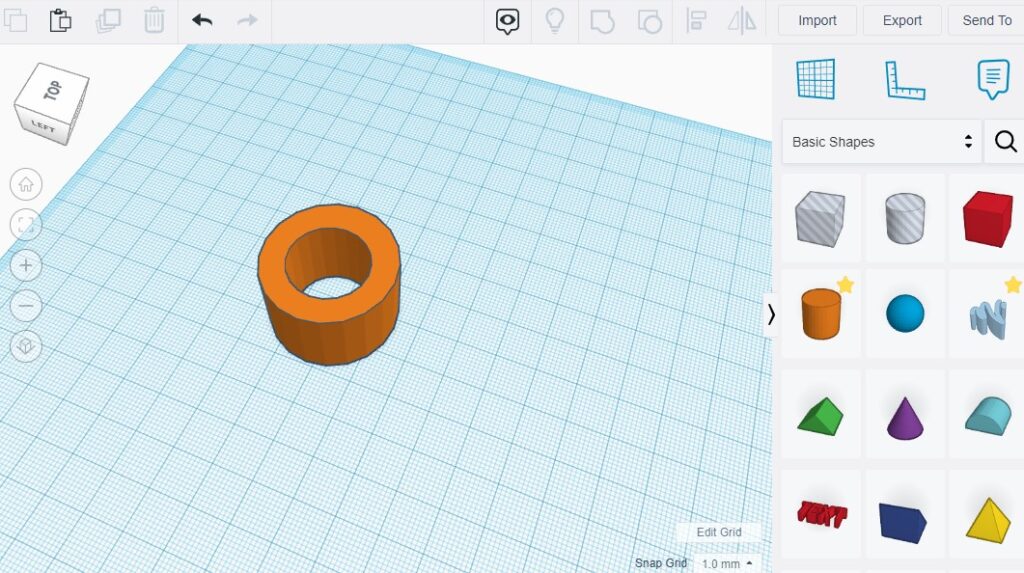USING 3D TOOLS


Grouping and Ungrouping
As we move onto the complex design, we will be combing more and more shapes together. So, this combining of shapes called grouping. Let’s take an example, as shown below three different shapes has been combined together in two of the design. It can be done with a feature called group. But notice there are design one has been a group and another is not. So, the design has the same colour is been grouped and the design having different colour is ungrouped.
The ungrouping is done by feature next to a group called as ungroup. The design in different colour indicates that shapes are not combined together.
The black Arrow shows group and ungroup icon.

Using Hole Shapes
We have made lots of design using solid shapes now we will try our hand using hollow shapes or you can say hole shapes. As in the above image (i) we can see two cylindrical shapes. one is solid and the other one is semi-transparent which is a hollow shape. By this semi-transparent shape, we can make or generate holes in our design as required. The hole shape can be of any geometry as we first click on solid shape then a dialogue box appears of shape control, from where we can choose the option of a hole and make our selected design a hollow body.
Here in the second image (ii) we have reduced the size of semi-transparent cylinder and brought it to the centre of the solid cylinder, we have used group feature and combined two bodies. The hollow shaped will cut off the solid part and a hollow tube will be designed







